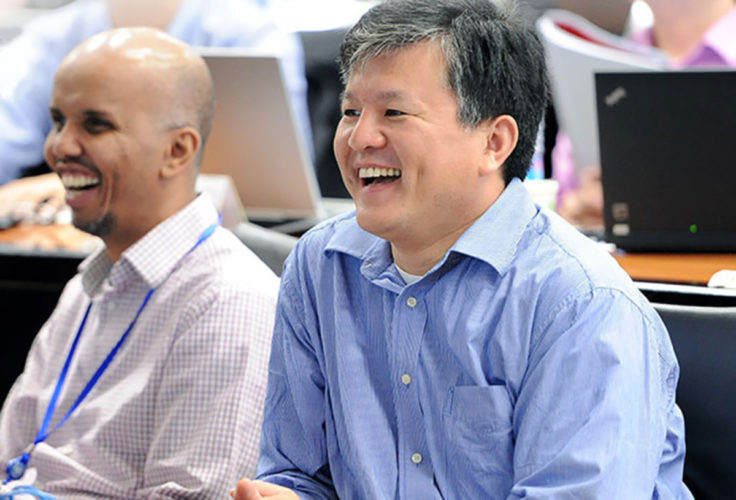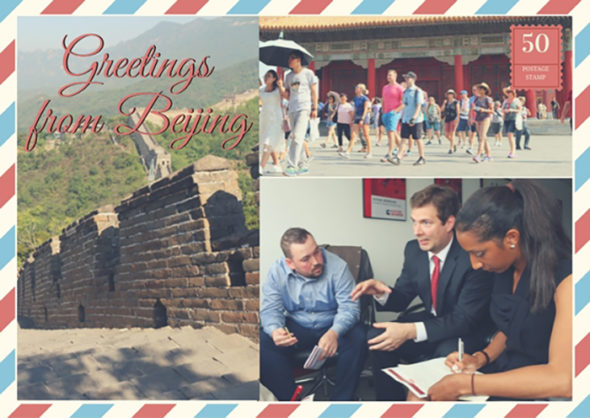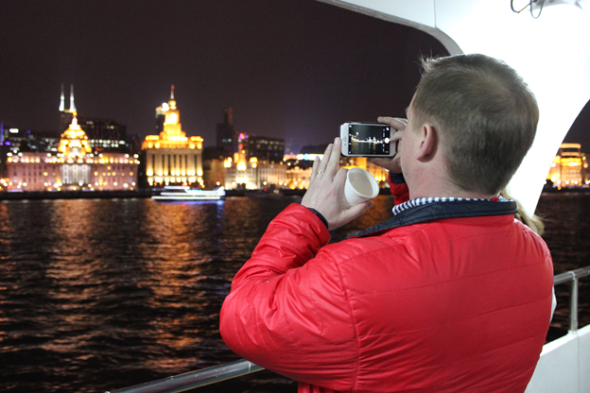Learning in the Executive MBA program extends far beyond classroom walls—in this case, to the other side of the world. As part of the curriculum’s four required residencies, EMBA 48 traveled to Beijing this week for the first half of their International Management Residency, where they explore global economies, markets, and leadership.
Executive MBA Student Services Manager Cory Barron sends this update from the cohort’s first two days in China:
Day 1 | The Great Wall of China and The Forbidden City
Muted blue skies, ideal June temperatures, and a light crowd greeted EMBA 48 at the Great Wall of China. Many in the class expressed that they “never dreamed” of having the opportunity to visit this historical site. The 5,000 mile long wall delivered a morning of intense climbs to gorgeous vistas of the Chinese dragon snaking atop the mountain contours.

John Flath trudging up the Mutianyu section of the Great Wall of China on a gorgeous June morning.

Jerod Mickelson, Tyler King and David Messner quick stepping on the Great Wall during the EMBA 48 International Residency in China.
By mid-afternoon, EMBA 48 was exploring the vastness of the Forbidden City. Over 8,000 rooms housed, in addition to the royal family, the palace guards, eunuchs, and hundreds of concubines. Up until 1911, this was reclusive home of the Emperors of China for hundreds of years.

EMBA 48 joined other tourists walking the original block stone courtyards of the Forbidden City.

Neeti Kailas enjoys a break from the afternoon sun while listening to her guide’s explanation of the Chinese dynasties.
Day 2 | Challenges facing multinationals
After weaving through the morning traffic, EMBA 48 made it to the northwest reaches of Beijing to tour Beijing Foton Cummins Engine Co. This is the ground work for the business challenge discussion they would have with Miguel Kindler, Cummins-Beijing Plant Manager. After Miguel’s short briefing on the plant’s capacity and Cummins’ 40-year history in China, each study team was given a question with one common challenge facing multinationals entering the Chinese market. The teams were given 30 minutes to come up with a solution and then present that solution to the Miguel for his evaluation.

Dinesh Thotala adjusts his receiver prior to a tour of the Cummins motor plant in Beijing.

While David Willis listens and April Powell takes notes, Doug Jost shares his strategy for his team’s business challenge question.

Lauren Brown, David Messner, and Mellissa Jobe listen to Miguel Kindler, Cummins-Beijing Plant Manager, as he answers their questions about their team’s business challenge.
After Team 4’s victorious Cummins presentation, EMBA 48 traveled to Beijing’s Embassy District. Walking through the six inch thick doors of the outer walls of the United States Embassy, the EMBAs passed security before entering the grounds. A panel of three officers, representing some of the 21 government agencies housed at the Beijing Embassy, explained how they are serving United States business interests in China.
Stay tuned for more updates from EMBA 48’s International Management Residency in Beijing and China. Learn more about the curriculum and residency opportunities in Olin’s Executive MBA program.
Guest blogger: Cory Barron, Student Services Manager, EMBA team


















